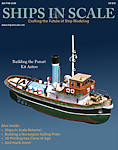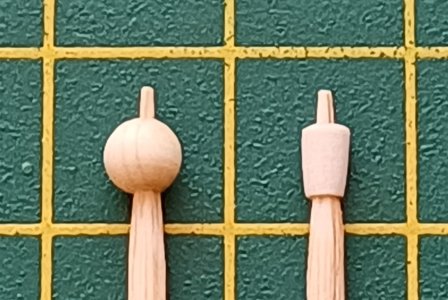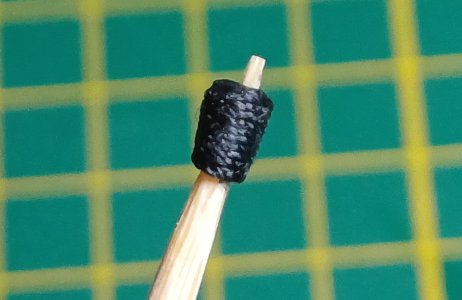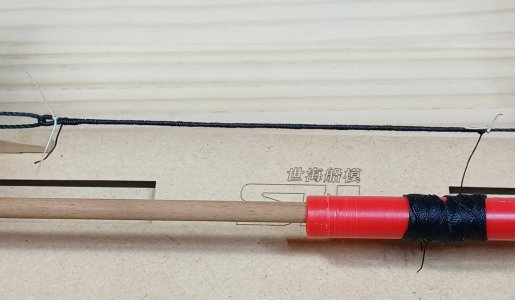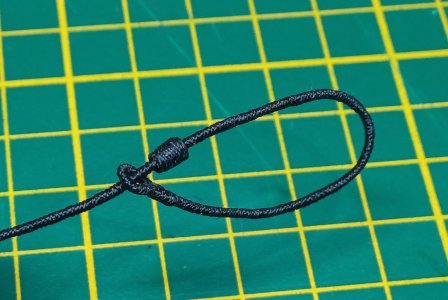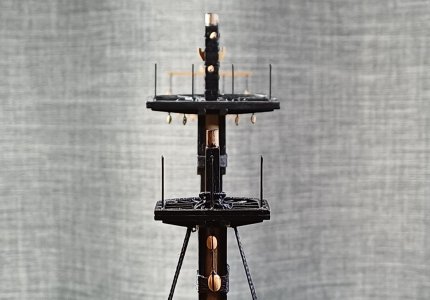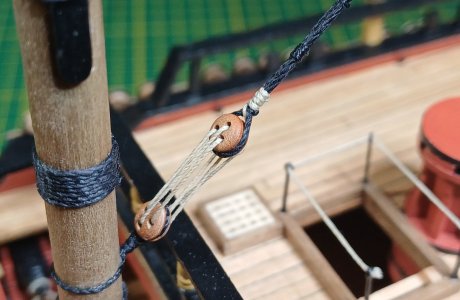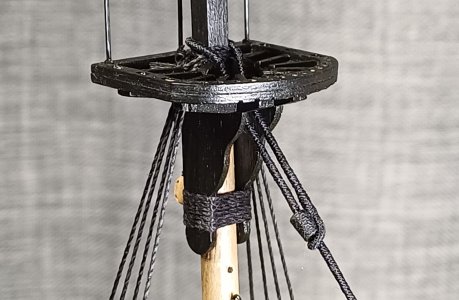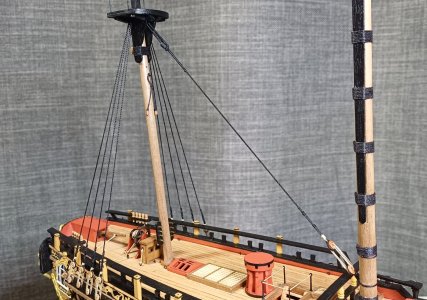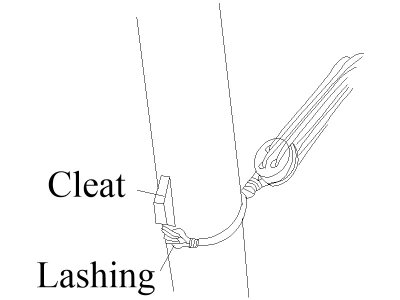The headworks are made up of a variety of multi-shaped components that are arranged to form the headrail and cathead assembly. Blu Tack is a useful agent to get an idea of how all the pieces hang together.
View attachment 399534
My starting point was to join and fix the upper and lower cheeks and the upper prow rail. The pieces are generously oversized, fortunately, as they all need to be cut, bevelled and shaped to fit together seamlessly and follow the curvature of the hull gracefully.
View attachment 399535
Care must be taken to size the lower cheek extension piece so that it doesn't interfere with the heels of the figurehead!
View attachment 399536
A mortise is created on either side of the prow to accomodate the catheads between the bulwarks and the rail, and deep enough to ensure that the capping rails will sit smoothly on top of the bulwarks. The cathead is also bolted to the deck for extra stability.
View attachment 399537
The hawse hole bolsters are used to position the hawse holes on the hull and were shaped, very carefully, in a progression of increasing drill bit sizes to a diameter that can eventually accommodate the anchor cables.
View attachment 399538
The three head timbers are installed on the prow and their ends are all angled to accommodate the bow head rail that will lie flat against them when installed later on. It is also a good time to install the remaining frieze work decorations which could otherwise be tricky to position with the headrails in the way.
View attachment 399539
The lower rail is bevelled at one end to fit snugly against the hull, and passes through the three notches of the head timbers until it comes to rest against the sloping curve of the upper prow rail.
View attachment 399540
The kit provides a decorative brass strip to serve as the eking rail, the extension that runs from the lower rail to the underside of the cathead support. I'm not sure why they do this as it seems at odds with the other rails, and I opted instead to create my own from template scraps. The only tricky bit was using a heating rod to slightly bend the lower half of the rail to conform to the curvature of the hull. Perhaps this is why a bendable brass strip was supplied in the kit.
View attachment 399541
Getting there. The lower and eking rails are in place, just the bow head rails to go. Symmetry is everything in this game.
View attachment 399542
The bow head rail flows from the top of the upper prow rail to the top of the bulwark right next to the cathead assembly, lying flush against the head timber edges along the way. The angle at which the rail terminates against the bulwark is a bit tenuous at best and was bolted to the sheer rail for good measure.
View attachment 399543
Getting the bow head rails to fit flush against the head timbers is quite imperative as there is little else to hold it securely in position.
View attachment 399544
I have taken some license in this headrail and cathead assembly. I understand the outer ends of the catheads should have sheaves, although this was not mentioned in the kit and I bound them with black rope instead for effect. I also kept the paintwork simple and did not install many of the decorations supplied in the kit ... too much bling for my liking
 View attachment 399545
View attachment 399545
Thanks for checking in

Mark
 . A very cool start to your rigging very much in line with the quality of your ship. Cheers Grant
. A very cool start to your rigging very much in line with the quality of your ship. Cheers Grant

